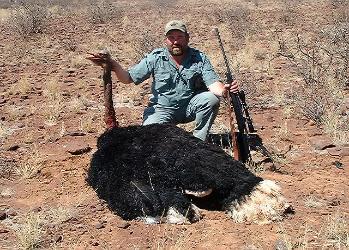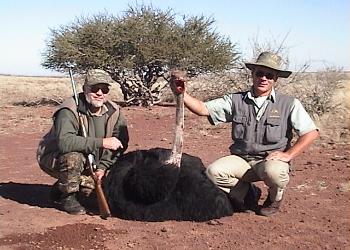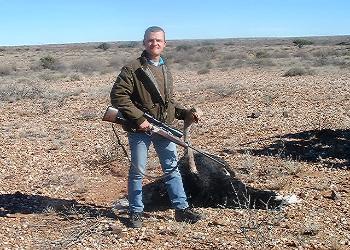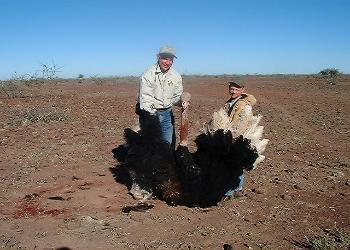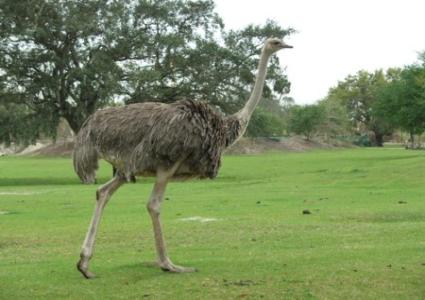
HOME | PAYMENT | DISCLAIMERS | CONTACT US
| 1-702-425-5086 |
Habitat
others are a mixture of races from North Africa for domestic stock purposes.
Ostriches live in nomadic groups of 5 to 50 birds that often travel together with
other animals. With their acute eyesight and hearing they can sense predators such
as Lions from far away. When lying down and hiding from predators, the birds are
known to lay their head and neck flat on the ground. When threatened, Ostriches
run away, but they can also seriously injure with kicks from their powerful legs.
They mainly feed on seeds and other plant matter; occasionally they also eat animals
such as locusts. Lacking teeth, they swallow pebbles that help to grind the
swallowed foods in the gizzard. They can go without water for a long time,
exclusively living off the moisture in the ingested plants. However, they enjoy water
and frequently take baths.
Ostriches become sexually mature when 2 to 4 years old; females mature about 6
months earlier than males. The mating process differs in different regions.
Territorial males will typically use hisses and other sounds to fight for a harem of 2
to 5 females. The winner of these fights will breed with all the females in an area
but only form a pair bond with one, the dominant female. The female cowers on the
ground and is mounted from behind by the male. The gestation period is 35 to 45
days. Typically, the male will tend to the hatchlings. The life span can extend from
30 to 70 years, with 50 being typical
others are a mixture of races from North Africa for domestic stock purposes.
Ostriches live in nomadic groups of 5 to 50 birds that often travel together with
other animals. With their acute eyesight and hearing they can sense predators such
as Lions from far away. When lying down and hiding from predators, the birds are
known to lay their head and neck flat on the ground. When threatened, Ostriches
run away, but they can also seriously injure with kicks from their powerful legs.
They mainly feed on seeds and other plant matter; occasionally they also eat animals
such as locusts. Lacking teeth, they swallow pebbles that help to grind the
swallowed foods in the gizzard. They can go without water for a long time,
exclusively living off the moisture in the ingested plants. However, they enjoy water
and frequently take baths.
Ostriches become sexually mature when 2 to 4 years old; females mature about 6
months earlier than males. The mating process differs in different regions.
Territorial males will typically use hisses and other sounds to fight for a harem of 2
to 5 females. The winner of these fights will breed with all the females in an area
but only form a pair bond with one, the dominant female. The female cowers on the
ground and is mounted from behind by the male. The gestation period is 35 to 45
days. Typically, the male will tend to the hatchlings. The life span can extend from
30 to 70 years, with 50 being typical
| Ostrich |

| Rennell Barney 702-425-5086 Kerry Barney |
| High Desert Safari Consultants |

